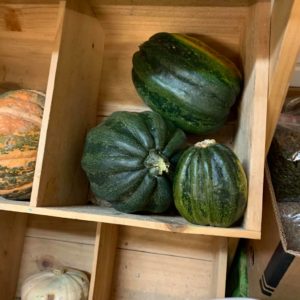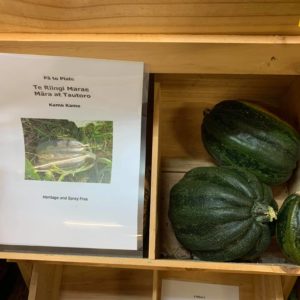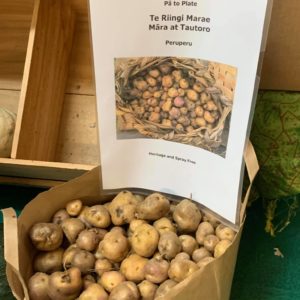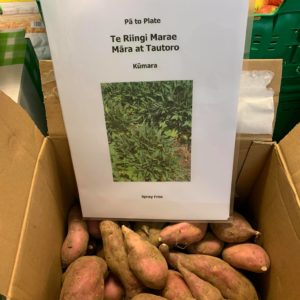PhD Opportunity: Pā to Plate
We are pleased to announce a scholarship opportunity for a student to undertake a 3-year doctoral research programme with our New Models of Collective Responsibility research programme. We are particularly interested in Māori social science graduates, environmental science graduates and business graduates
Kia hiwa rā! We are providing a one-off opportunity for a student to join our exciting team to undertake a doctoral research programme with us. Funding covers three years at $28,000 p.a. increasing by $500 p.a., plus fees. You can enrol at Otago University or Massey University. You can be based at home, or be within the academic community of either campus.
We are particularly interested in Māori social science graduates, environmental science graduates and business graduates (with a Masters degree or high Hons with dissertation).
The broad kaupapa or themes we are exploring are:
- Food sovereignty
- Circular economies
- Marae innovation and development
- Social enterprise
- Cultural identity and economic development
- Māori land use
- Urban migration and reconnection to rural marae; and more
Read on to find out more about the Pā to Plate workstream of the New Models of Collective Responsibility research programme, and the people you can join.
To apply, or for more information, please contact Professor Merata Kawharu, co-leader of the research programme. Applications are due by December 2020. |
Background
Developed in the rural north in the Bay of Islands on the east coast and Hokianga on the west coast, Pā to Plate is bringing together small family-run businesses and Māori land trusts to grow and provide foods and other resources to their descendant communities, wherever they live.
Many Māori from the Bay of Islands and Hokianga now live in cities to the south and are no longer strongly connected to their ancestral lands. Those who have remained in the rural marae settlements are a minority. Northland, like other regions in New Zealand, continues to face significant economic, cultural, health, justice and environmental problems. Problems are complex and cross-generational.
Multi-sectoral and multi-agency approaches to addressing the problems are important, but so too are community-led initiatives that aim to nurture and grow people’s passions, skills and resources on and in their lands and waterways.
Pā to Plate does just these things, guided by cultural principles of custodianship on one hand and market principles on the other. It aims to provide employment, grow and supply healthy foods and other resources, reconnect dispersed community members and help reverse negative trends.
Pā to Plate, therefore, re-centres rural marae communities as places of human and environmental wealth and health. It is providing a solution to sit alongside other solutions and so help to transform communities at regional-wide scales.
Pā to Plate is a community-led initiative that aims to nurture and grow people’s passions, skills and resources on and in their lands and waterways
What is Pā to Plate?
After three years of research led by Māori researchers and their communities, it was found that people wanted better employment opportunities in Northland, they wanted access to healthy foods and resources from home and they wanted to be more strongly connected to their ancestral homes. Food and other resources grown in ancestral homelands could provide these things.
These insights founded the building blocks for developing a market economy called Pā to Plate. Growers and suppliers are coming together to provide their produce and associated kōrero (stories) and mātauranga (knowledge of lands and growing) to their dispersed community members and the wider public.
Pā to Plate is at the business development phase where an online ordering system is being built, along with a support system for growers where each can call on others (‘tautoko’) and learn (‘ako’) from individual and collective (kotahitanga) experiences. Government funding and private sector funding is seeding this development phase so that the market aims to be operational in 2020.
We will first trial Pā to Plate at physical markets (eg Kerikeri Packhouse market, Whangārei market) to test produce marketing, branding and value chain attributes while the longer term goal is to provide an online market place (www.patoplate.com) enabling more descendants to purchase from home communities. Conceptual designs for the website have begun and we have funding to complete the site for mid 2020. We have an active social media presence via E Mara E which is overseeing the Pā to Plate programme (600 followers on Facebook, but we have a lot still to do to improve reach). We are working with Chapman Tripp on the legal entity E Mara E.
The longer term goal of Pā to Plate is to provide an online market place (www.patoplate.com) enabling descendants to purchase from home communities
What are the hua or resources for Pā to Plate?
Some foods grow better in some regions than others. Tikanga and trialling over generations are important guides in this regard. So too are ideas that foods should be grown that are not detrimental to the environment and climate. These are important human-environmental health-based principles. Pā to Plate, therefore, has an emphasis on plant-based whole foods such as kūmara, peruperu, potato and pumpkin, along with carrots, broccoli and other green vegetables and fruits as well as meat.
Non-food items include young Indigenous saplings and eventually we aim to offer Māori medicinal plants and berries found in indigenous forests throughout Northland.
A longer-term aspiration is to help restore waterways and return them to good health through community-agreed land-use changes and improved farming practices so that traditional foods from waters like koura and tuna will become part of the Pā to Plate value chain and offering.
What’s in a name?
‘Pā’ has several layers of reference and meaning. While literally referring to fortified hamlets, it is also synonymous with ‘papakainga’ which refers to villages of peace-time living. The word also connects to ‘whakapapa’ which means genealogy and the layering and ordering of the universe.
In other regards, pā more holistically refers to a wider ancestral landscape that encompasses marae and multiple communities, farms or rural lands if not also towns and villages.
‘Plate’ refers to the consumers. The primary consumer market is the descendant market living at marae or nearby, and living in cities. The secondary consumer market is the general public.
What is the circular value chain?
Pā to Plate is an indigenous circular value chain model. Rather than seeing a value chain as a linear beginning to end ‘supplier to consumer’ chain, the Pā to Plate chain is cyclical and circular where consumers return resources such as labour or foodscraps back to the home communities that supplied them.
The importance of this is multiple – it strengthens connections between family members, it identifies the source of foods with associated customary knowledge and story, it recycles unwanted or unneeded food ‘left overs’, it contributes to restoring healthy lands through composting systems and it helps to mitigate the climate crisis by reducing the need for synthetic fertiliser, by ‘acting local’ by reducing the need to buy foods from far away and by utilising non-plastic “eco” bags to carry food.
The Pā to Plate value chain is cyclical and circular, where consumers return resources such as labour or foodscraps back to the home communities that supplied them
Medium to long term futures
Pā to Plate can be replicated in any indigenous community anywhere. At a wider scale, when multiple communities come on board, the opportunity for inter-indigenous market exchange will be significant; each indigenous community ‘trading and exchanging’ their produce on their terms.
With medium to long-term human capacity and resource support, Pā to Plate aims to build and support wider networks of Māori community growers throughout New Zealand, the Pacific and internationally amongst other Indigenous peoples and communities.
Team
- Merata Kawharu
- Paul Tapsell
- Hirini Tane
- Krushil Watene
- Paul Voigt
- Raaniera Te Whata
- community food providers (Oromahoe, Tautoro, Whirinaki, North Hokianga, Taheke/Kaikohe, Awarua, Motatau)
- plus other members of the the New Models of Collective Responsibility research programme team
Author
 View Our Strategy Document 2019 – 2024
View Our Strategy Document 2019 – 2024








Leave a Reply